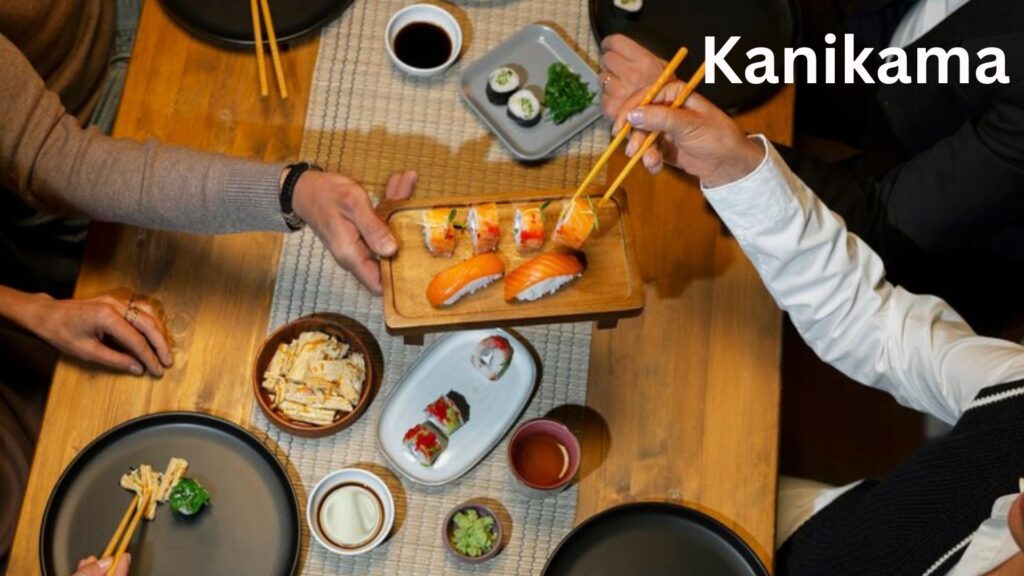Kanikama, also known as imitation crab meat, is a popular ingredient in various dishes around the world. Made from a blend of fish and other ingredients, it’s a versatile component in sushi, salads, and more. In this article, we will delve into the details of Kanikama, exploring its origins, preparation methods, nutritional benefits, and its role in modern cuisine.
What is Kanikama?
Definition and Ingredients
Kanikama, commonly referred to as “imitation crab meat,” is a seafood product designed to mimic the taste and texture of real crab meat. The primary ingredient in Kanikama is surimi, a processed fish product made from white fish such as pollock or hake. Surimi is mixed with starch, egg whites, and flavorings to create a product that resembles crab meat in both taste and texture.
History and Origin
The development of Kanikama’s can be traced back to Japan in the 1970s. The term “kanikama” itself is a portmanteau of the Japanese words for crab (“kani”) and the Japanese word for imitation or fake (“kama”). The invention of Kanikama’s aimed to provide an affordable alternative to real crab meat, which can be expensive and less accessible.
How Kanikama is Made
The Surimi Process
Preparation: Fresh fish, typically pollock, is cleaned and minced into a paste.
Washing: The fish paste is washed several times to remove unwanted components, leaving behind a pure, white fish paste.
Blending: The washed fish paste is blended with other ingredients such as starch, egg whites, and flavorings to achieve the desired texture and taste.
Cooking: The mixture is then steamed and formed into the shape of crab meat.
Varieties of Kanikama
Classic Kanikama: Typically found in sticks or flakes, this is the most common form used in sushi rolls and salads.
Crab Flavored Meat: Often used in salads and dips, this variety comes in a more finely shredded form.
Specialty Kanikama: Sometimes flavored or colored to mimic specific types of crab meat, such as snow crab or king crab.
Nutritional Value of Kanikama
Macronutrients
Kanikama’s is a low-calorie food, making it a popular choice for those seeking a lighter alternative to real crab meat. It is generally low in fat and high in protein. A standard serving of Kanikama’s contains:
Calories: Approximately 60-80 per 100 grams
Protein: About 8-10 grams per 100 grams
Fat: Less than 1 gram per 100 grams
Carbohydrates: Around 10-12 grams per 100 grams
Micronutrients
Kanikama’s also provides essential vitamins and minerals, including:
Vitamin B12: Important for red blood cell formation and nerve function.
Selenium: An antioxidant that helps protect cells from damage.
Iodine: Essential for thyroid function.
Culinary Uses of Kanikama
In Sushi
Kanikama’s is a staple in sushi cuisine, particularly in rolls like the California roll. Its mild flavor and firm texture make it a suitable substitute for crab meat in various sushi dishes.
In Salads
Kanikama’s is often used in salads, such as crab salad or seafood pasta salads. Its versatility allows it to blend well with various ingredients, from fresh vegetables to creamy dressings.
In Dips and Spreads
Imitation crab meat is commonly used in dips and spreads, such as crab dip or seafood spread. It can be mixed with ingredients like cream cheese, herbs, and spices to create a flavorful appetizer.
Benefits of Kanikama
Cost-Effective
Kanikama’s offers a more affordable option compared to real crab meat, making it accessible for a wider range of consumers. This cost-effectiveness does not compromise its versatility and taste.
Consistent Quality
Because Kanikama’s is made from surimi, it provides a consistent texture and flavor in dishes. This uniformity is particularly advantageous for chefs and home cooks alike.
Allergen-Friendly
Kanikama’s is a suitable alternative for those who are allergic to shellfish, as it is made from fish and does not contain the same allergens as real crab meat.
Conclusion
Kanikama, or imitation crab meat, is a versatile and cost-effective alternative to real crab meat. With its origins in Japan, it has become a popular ingredient in various dishes around the world. From sushi and salads to dips and spreads, Kanikama offers a consistent and flavorful option for those seeking to enjoy the taste of crab meat without the high cost. Its nutritional benefits and allergen-friendly nature further enhance its appeal. Whether you are a chef or a home cook, incorporating Kanikama into your culinary repertoire can elevate your dishes while keeping your budget in check.
ALSO READ:The Art of Toastul: Crafting Perfect Toast for Every Occasion
FAQs
What is the main ingredient in Kanikama?
The main ingredient in Kanikama is surimi, a processed fish paste made from white fish such as pollock or hake.
Is Kanikama a healthy food choice?
Kanikama is low in calories and fat, making it a healthy option for those looking to reduce their calorie intake. It is also high in protein and provides essential vitamins and minerals.
Can Kanikama be used in place of real crab meat?
Yes, Kanikama can be used as a substitute for real crab meat in many recipes, including sushi, salads, and dips. It mimics the taste and texture of crab meat effectively.
Is Kanikama safe for people with shellfish allergies?
Kanikama is made from fish and does not contain shellfish allergens, making it a suitable alternative for individuals with shellfish allergies.
How should Kanikama be stored?
Kanikama should be stored in the refrigerator and used before the expiration date. It can also be frozen for longer storage, but it should be thawed in the refrigerator before use.







